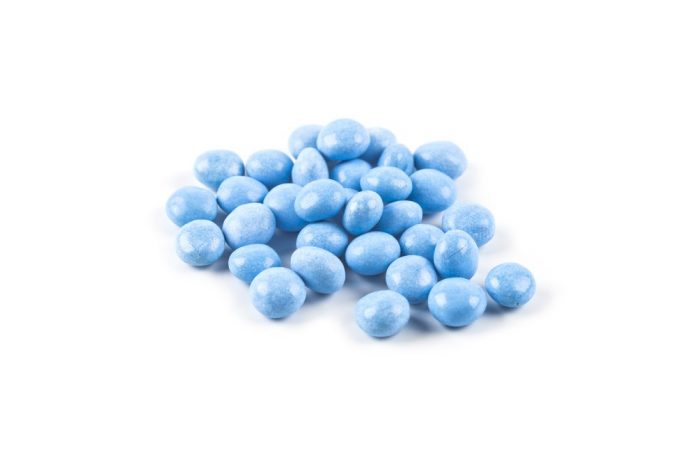
It may not yet be the end of artificial colors and artificial food dyes, but with a new discovery of a natural alternative to artificial blue food coloring, we are closer to that reality. Because synthetic dyes and food colorings are usually made from petrochemicals, there is great concern about food safety, health impact, and environmental damage associated with their production and use. A move to all-natural colors is a healthier way to go.
New study, new blue
At the University of California, a study led by Pamela Denish found a pigment in red cabbage that is similar to the artificial food coloring that industry has been using; namely, Brilliant Blue FCF (E133). The pigment is a type of anthocyanin molecule, and although red cabbage has very little of this primarily red coloring, scientists found a way to add a special enzyme to it to turn it blue. Natural blue in nature is not common because it requires complicated molecular structures to absorb the wavelengths that result in the color.
You won’t be seeing this new natural blue coloring in commercial foods or other products just yet, as scientists still need to conduct safety testing. However, according to another study author, Kumi Yoshida at Nagoya University, “Red cabbage anthocyanins have a long, long history in our diets,” and thus the natural blue dye is unlikely to cause any side effects.
Other natural colors from food
Although the discovery of a natural blue from a food source in the laboratory is news for those searching for large commercial use, people around the world have been making their own natural colors (including blue) from foods and other natural sources for millennia. According to the National Food Colours Association, “Natural food colours originate from a wide range of sources like vegetables, fruits, plants, minerals, and other edible natural sources.” These colors are “obtained by physical and/or chemical extraction resulting in a selective extraction of the pigments.”
In fact, right now you may have the makings of natural colors in your pantry or refrigerator. Some of these sources are also used currently by selected food manufacturers in their products.
If you want to make your own colors, here are the items commonly used:
- Pink: strawberries, raspberries
- Red: beets, tomatoes, female cochineal insect
- Yellow: turmeric, saffron
- Green: spinach, matcha tea
- Purple: purple sweet potato, blueberries
- Blue: red cabbage plus baking soda, spirulina
- Brown: tea, cocoa, coffee
- Black: activated charcoal, squid ink
If you make your own colors from food and other substances, they won’t be as intense as those made commercially but they will be much better for you.
Read about make your own food coloring and skip the artificial colors
The chemistry of natural colors
Have you ever wondered how these natural colors come about? To mix a little chemistry with magic, here are some simple basics about natural food colors:
- Anthocyanins are substances found in certain plants that are responsible for blue, purple, and red. These water-soluble pigments are sensitive to changes in pH: they are most red in highly acidic conditions and more blue at high pH levels.
- Chlorophyll is a natural plant pigment found in all green leafy vegetables.
- More than 400 different carotenoids are found in yellow, red, and orange vegetables, fruits, and plants. Most of them are oil-soluble and not affected by changes in pH. They are often used in dairy products and soft drinks.
- Turmeric contains the pigment curcumin, which is oil soluble and provides a lemon yellow color. It is often used in soups, confectionery, and pickles.
Read about artificial colors & health concerns
Bottom line
Food colors are used to enhance the appearance of food, yet they may cause allergic reactions, food hypersensitivity, behavioral problems in children, abdominal pain, diarrhea, vomiting, and worsening of asthmatic symptoms. Some artificial colors called azo-dyes may even contribute to forming potentially carcinogenic products. The discovery of an alternative to artificial blue color is a significant step in helping reduce the health risks associated with the consumption of artificial dyes in our food supply. Consumers are encouraged to avoid artificial colors and read labels carefully for use of natural colors.




